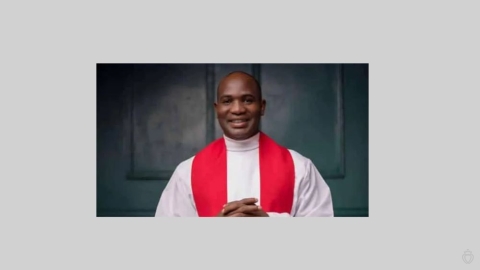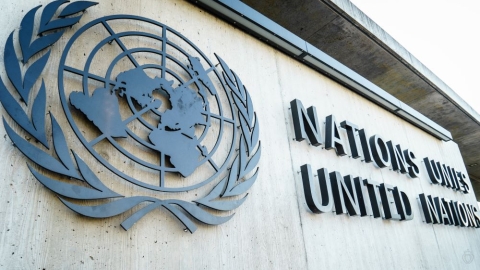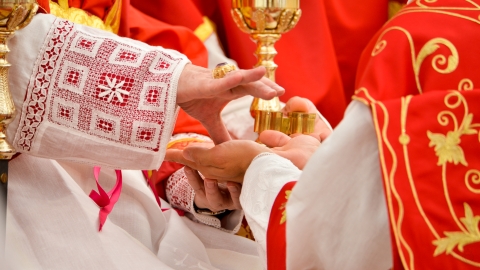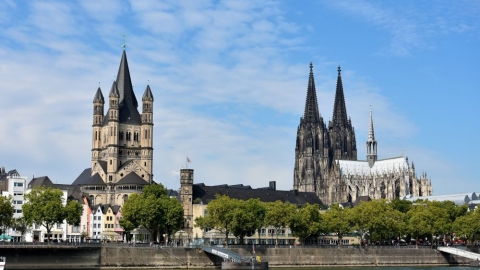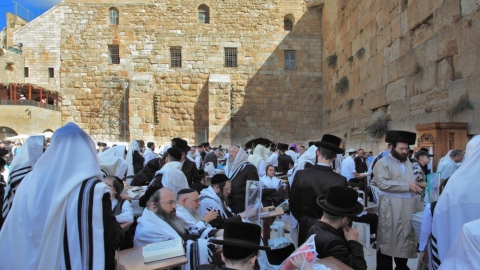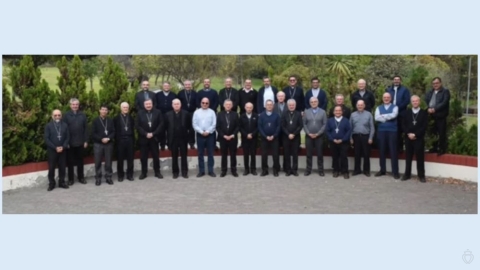Mexico: The New “Mayan” Rite of the Mass (2)

Ritual candle lighting
In the first article it was reported that a “Mayan” rite of the Mass was in preparation, particularly intended for the diocese of San Cristóbal de las Casas, supported by the undersecretary of the Dicastery for Divine Worship and the Discipline of sacraments.
The project is well advanced and a draft has been obtained by the LifeSiteNews site. It confirms the introduction of elements of Mayan culture into the liturgy. Entitled “Adaptations to the Ordinary of the Mass among the Indigenous Peoples of the Diocese of San Cristóbal de las Casas, Chiapas,” the document, dated April 2023, is 31 pages long. It was provided by Cardinal Felipe Arizmendi Esquivel.
The Key Points
The central elements of the project are: “incensing administered throughout Mass by lay male or female persons; prayers led by a male or female lay person with a new liturgical office called “principal” throughout the Mass; and Mayan liturgical dances. In addition, the inclusion of a Mayan altar is preserved, but with the name Mayan Offering.”
The diocese therefore wishes to establish two new liturgical offices, held by a male or female lay person, chosen by the parish community then merely confirmed by the bishop. The first of these offices is being called a “principal,” the second one an “incensor.”
The “Principal” or “Elder”
“The principal is being placed side by side with the priest and leads the faithful in prayers during the Mass. This role considerably diminishes the importance of the priest at Mass. This new office seems to be given a high importance.
Thus “the liturgical office of principal is conferred on the person, male or female, who is a moral authority in the community, who guides his people in prayer and faith. He is the one who guides and give advice on the life of faith, religious traditions and also takes care of the good performance of the work of those who have a ministry of service in the Christian community. Within the liturgical celebrations its function is to guide the people, at the invitation of the one who presides over the celebration, in moments of community prayer.”
The project places the principal above the permanent deacon and his wife: “The principals or elders, representatives of the indigenous ecclesial community, are very important agents for formation. They are to accompany with their advice, experience and wisdom the Indigenous Permanent Deacon and his wife, ensuring their firm roots in the community, according to their culture.”
Incensor
The “incensor” incenses the altar, the priest, etc., at different moments during the Mass, which further diminishes the role of the priest. The draft speaks of the “incensation of the cross and the altar and, if applicable, the images of Mary and the saints.” This new liturgical office can be exercised by a man or a woman:
“It is proposed that, among the original peoples of the diocese, the liturgical office of incensation for all liturgical actions of the Church should remain in the hands of the persons, male or female, designated by the community and approved by the Ordinary.” These tow new offices, principal and censer, already exist by episcopal approval.
Community Prayer According to Mayan Culture
The roots of this culture are pagan. Despite Cardinal Arizmendi's explanation: “The rites that we propose have a Catholic base, but developed by these new peoples, who have Mayan origins, but who have distanced themselves from the ancient Maya,” the fear of syncretism remains. And the draft goes so far as to state that the Mayan practices are indispensable for the indigenous for getting into a relationship with God, thereby implying that the old pagan way of prayer is even more effective than the prayers of the Holy Sacrifice of the Mass.”
“Prayer aloud and done communally guided by a principal is the way in which one opens one’s heart to God, enters into direct relationship with Him, dialogues with Him. Without this element, one is not willing to have the heart to participate, to listen to His word. For this reason, community prayer guided by the principal is an essential element that must be included in the ordinary of the Mass celebrated with the original peoples of this diocese. Without this element, one would not be entering adequately into a personal relationship with God as is intended in the celebration of the Eucharist with the initial rites.”
In other words, “without the ancient way of praying aloud, with the ancient ritual of lighting candles that are standing on the ground in front of the altar – a practice that stems from the pagan rituals of the Mayan people – the weight of the Sacrifice of the Mass appears to be diminished.”
According to the draft: “We have also the historical element, since this has been the proper way of these cultures to live the relationship with God. In this way, the celebration of the Eucharist and the proper way of praying of these peoples do not remain as something alien or separate, but are done together, all in harmony, including creation.” For a Catholic, harmony with creation is achieved through God, and therefore through Jesus Christ.
Lighting Candles or Candles
The need for this practice is explained as follows: “Community prayer with candle lighting has been one of the modes of prayer that are most frequently used in indigenous peoples, with which they express all the requests that the community has in its heart.… this mode of prayer is one of the ways that these peoples have to express more strongly their trust in God...”
“The authors of the draft seem to imply that the ancient rite of candle lighting is a more powerful tool for the indigenous than the Holy Sacrifice of the Mass,” or at least necessary for its full effectiveness.
Mother Earth and the Ancestors
The lighting ceremony, “which is accompanied by people bowing their heads and touching the ground and singing soft tunes, is meant not only to get in touch with God, but also with one’s ancestors and Mother Earth, thereby placing God on the same level as these other entities.” We see how the worship of God seems to be placed on the same plane as the worship of idols.

Encensement de l’autel par une femme au début de la messe
La prière communautaire selon la culture maya
Les racines de cette culture sont païennes. Malgré l’explication du cardinal Arizmendi : « Les rites que nous proposons ont une base catholique, mais ils ont été développés par ces peuples aux origines mayas qui se sont éloignés des anciens Mayas », la crainte du syncrétisme demeure. Le projet affirme que les pratiques mayas sont indispensables aux indigènes pour entrer en relation avec Dieu :
« La prière à haute voix et communautaire, guidée par le principal, permet d’entrer en relation directe avec Dieu. Sans cet élément, le cœur n’est pas disposé pour participer. Ainsi cette prière communautaire est un élément essentiel à inclure dans la Messe célébrée avec les peuples du diocèse. Sans elle on n’entrerait pas de manière adéquate dans une relation personnelle avec Dieu. »
En d’autres termes, sans cette ancienne manière de prier, accompagnée de l’allumage des cierges posés sur le sol devant l’autel – pratique issue des rituels païens du peuple maya – la grâce du sacrifice de la Messe semble être diminuée. Selon le projet : « Il y a aussi un élément historique, puisque c’était la manière propre à ces cultures de vivre la relation avec Dieu.
« De cette façon, la célébration de l’Eucharistie et la manière propre de prier de ces peuples ne restent pas comme étrangères ou séparées, mais se font ensemble, en harmonie, y compris avec la création. » Pour un catholique, l’harmonie avec la création se fait par Dieu, et donc par Jésus-Christ…
L’allumage de bougies ou de cierges
La nécessité de cette pratique est expliquée ainsi : « La prière communautaire avec allumage de cierges a été l’un des modes de prière le plus fréquemment utilisé par les indigènes, par lequel ils expriment toutes les demandes que la communauté a dans son cœur. (…) Ce mode de prière est l’un des moyens dont disposent ces peuples pour exprimer plus fortement leur confiance en Dieu. »
Les auteurs du projet semblent dire que le rite d’allumage de bougies est, pour les indigènes, un moyen plus puissant d’union à Dieu que la Messe, ou du moins nécessaire pour sa pleine efficacité.
La Terre mère et les ancêtres
La cérémonie de l’allumage, qui s’accompagne d’une inclinaison de la tête, d’un contact avec le sol et de chants, est destinée à entrer en contact non seulement avec Dieu, mais aussi avec les ancêtres et avec la Terre mère, mettant ainsi Dieu sur le même plan que la terre ou les ancêtres. Nous voyons comment l’adoration de Dieu semble être placée sur le même plan que l’adoration des idoles.

A Mayan altar
The Mayan Altar
The lighting of the candles is linked to the installation of a Mayan altar, named “Mayan offering” by the document, which “describes this altar that is to be placed inside the church, close to the real altar, and also mentions again the Mayan symbolic colors of red, black, white, and yellow, as well as the four cardinal points or orientations.” The cardinal colors have a meaning derived from the ancient polytheistic religion.
“Near the altar are placed plants, flowers, fruits and seeds of the region, along with candles of various colors (red, black, white, yellow, green and blue). In the place that marks the course of the east a red candle and fruits and flowers of the same color will be placed; towards the course of the west a black candle will be placed together with fruits and flowers close to this tonality; towards the course of the north a white candle and fruits and flowers of the same color will be placed; towards the direction of the south a yellow vein will be placed together with fruits and flowers of that color. Finally in the center of that space, where the four orientations intersect, a crucifix, a Bible and on its sides a blue candle and a green candle will be placed, along with water, earth and the snail.”
Liturgical Dance
According to the draft, “thanksgiving can be expressed with a dance.”. It is called a “collective thank you. . . In the dance, the feet caress the face of Mother Earth, making light movements. The face of God is greeted by moving to the four directions of the universe…. It is time to feel the closeness of our brothers and sisters, dancing together, to the same being.”
“God dances in our midst.… But it is also to feel the presence of Jesus, of the saints, of our ancestors, who are dancing with us, not as a forced imagination, but as a real spiritual presence, in joint harmony.”
The text therefore claims “that the ancestors are ‘really spiritually’ present at this ritual dance, something that seem to be at odds with Catholic doctrine. In the draft document, “this liturgical dance is ‘an integral part of the liturgical action.’ It is danced liturgy, not merely dance in the liturgy.”
A Word About the Authors
The draft’s author is a Jesuit priest, Fr. Felipe Jaled Ali Modad Aguilar, who was already involved in the preparation of the 2019 Amazon Synod. He is named as the coordinator of the diocesan commission for the new indigenous rite in Chiapas, which is very attentive to communication with the ancestors.
Another member, Fr. Víctor Manuel Pérez Hernández is pastor of the parish of San Juan Chamula, a parish “known for its animal sacrifice and other non-Catholic – or pagan - worship practices.” Several tourists tell of their experiences in this church. Here is a sample.
“They allow the candles to burn completely during and after their personal ceremonies, leaving behind puddles of multicolored wax. Worshipers pray aloud in Tzotzil [an indigenous language], sometimes weeping and repeatedly making the sign of the cross. They drink Coca-Cola and “pox” – the regional distillate - and burp with the intention of evacuating malevolent spirits.”
“Sometimes the family is joined by a curandero [shaman] who may lay hands upon the afflicted, absorb their maladies into a chicken egg or cure them by waving a live hen overhead. In extreme cases they then kill the chicken right there.” And the “Mass” is regularly celebrated in this church by the priest Hernández.
Conclusion
It seems quite obvious that the adaptation of cultural elements and rites of Mayan origin for the diocese of San Cristobal de las Casas does not avoid syncretism. For people who are immersed in a culture transmitted over the centuries and heavy with their primitive meaning, it is very difficult, if not impossible, to free themselves from what is linked to this system.
If bishops and priests are able to make the distinction and balance things out, it is not the same for the faithful. Moreover, what need is there to bathe the disciples of Christ in these elements which can only confuse them by leaving them attached to practices that are in the least superstitious, and for the most part, idolatrous? Who is responsible for fixing this paganized rite?

Un autre autel maya
Related links
(Sources : LifeSiteNews/wikipédia/thebelgianblackpacker – FSSPX.Actualités)
Illustration : Facebook / Seminario Conciliar De San Cristóbal
